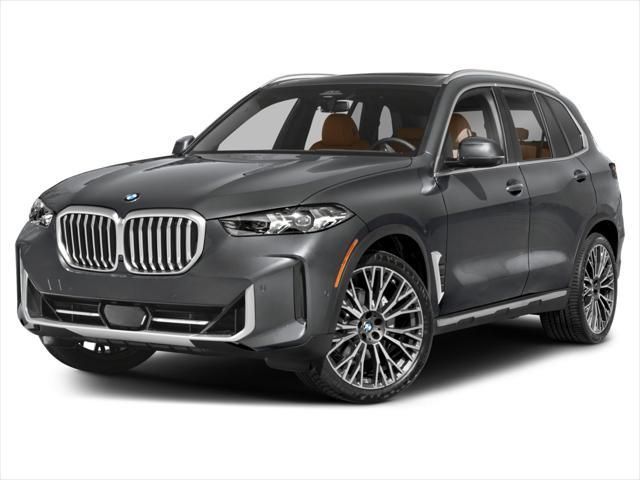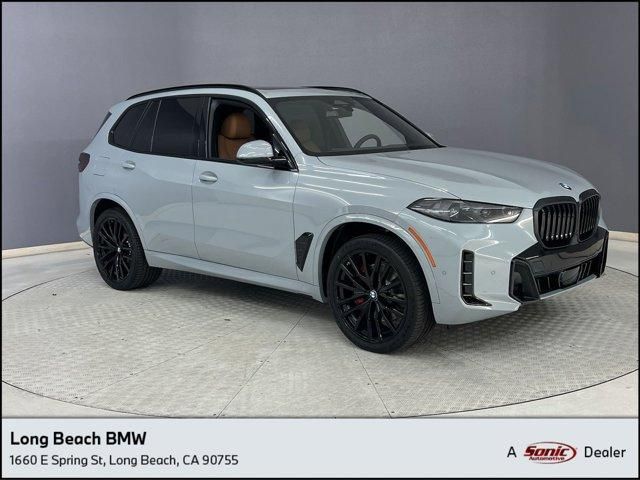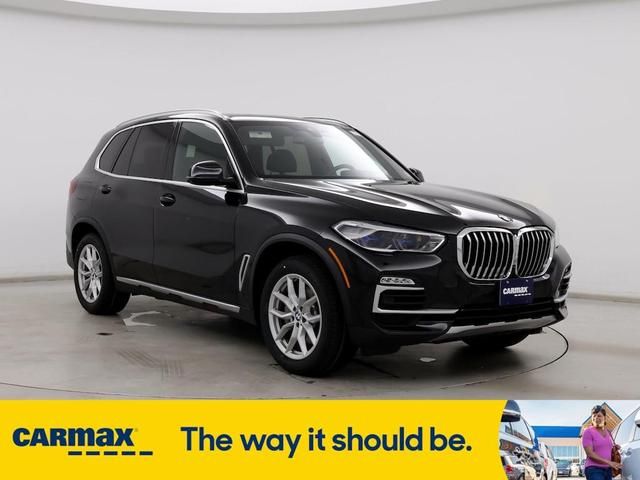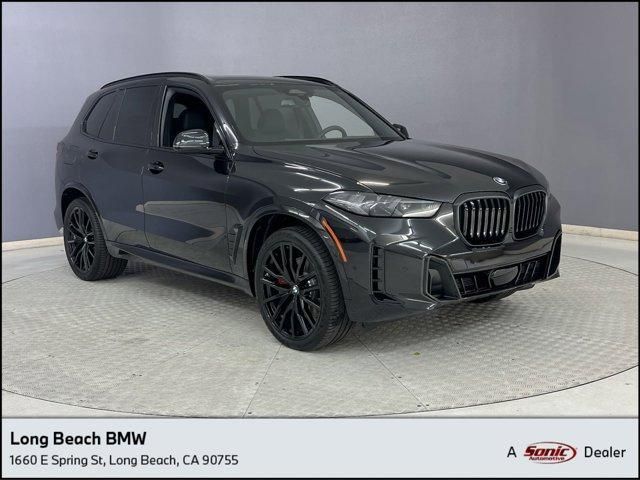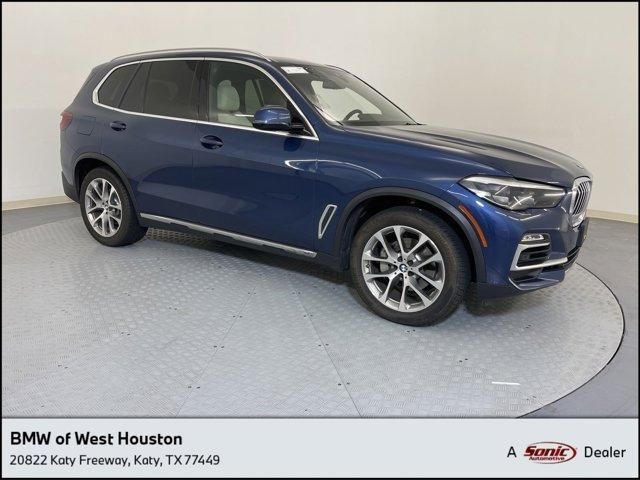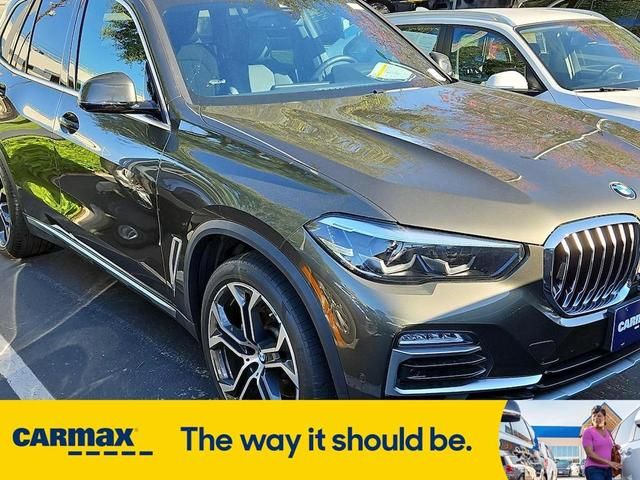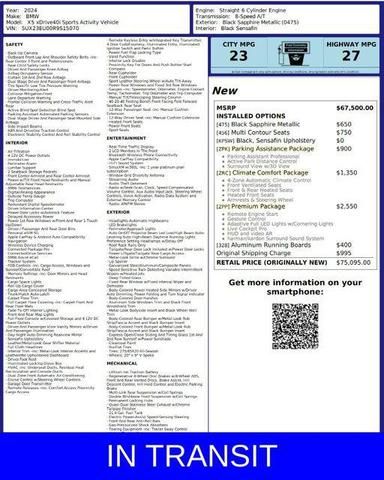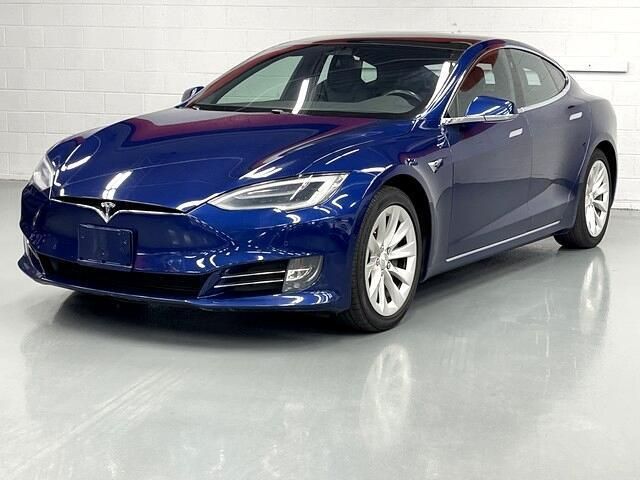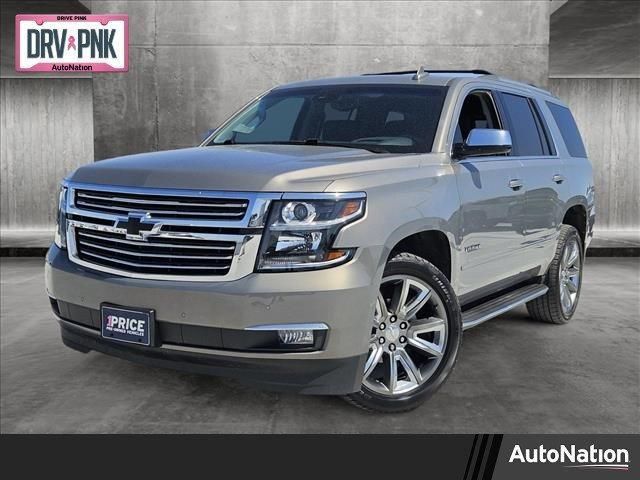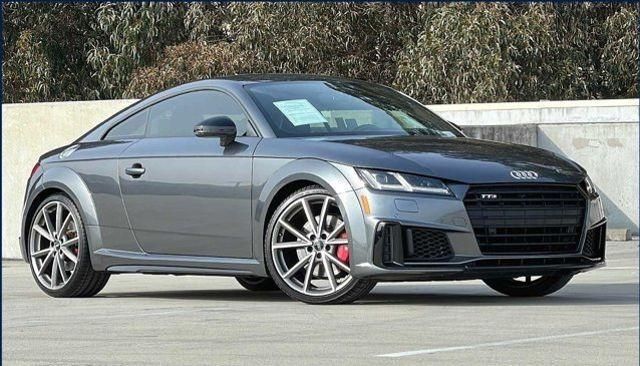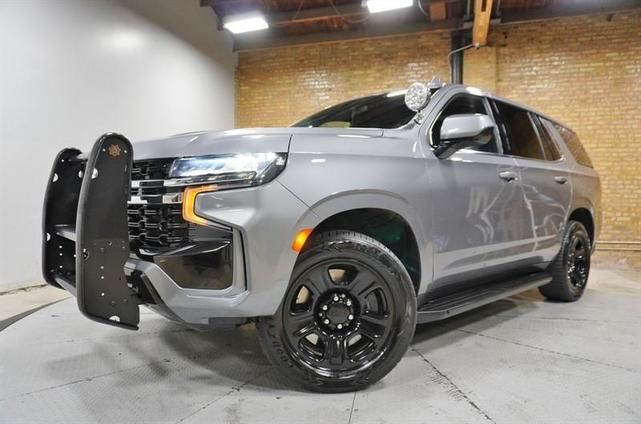2020 BMW X5VIN: 5UXCR4C01L9B13558
Historical Records
REBUILT TITLE ISSUED
Damage to rear
Vehicle involved in a sideswipe collision with another motor vehicle
Airbag deployed
| Year | 2020 |
| ODO | 621 mi |
| Seller | Hidden text (Hidden text) |
| MSRP | $4562 |
| Location | Lafayette, LA, 70501 |
| Date | appeared 5 years ago latest price $2621 sale post disappeared 2021-04-02 |
| Sale Website Type | classifieds |
| Body Style | SUV |
| Transmission | 8-Speed Automatic |
| Engine | 3.0L I6 24V GDI DOHC Turbo |
| Drive | RWD |
| Fuel Type | Gasoline |
- A/C
- Hidden text
- AM/FM Stereo
- Hidden text
- Bucket Seats
- Hidden text
- Fog Lamps
- Hidden text
- Aluminum Wheels
- Hidden text
- Adjustable Steering Wheel
- Hidden text
- Intermittent Wipers
- Hidden text
- Multi-Zone A/C
- Hidden text
- Panoramic Roof
- Hidden text
- Auxiliary Audio Input
- Hidden text
- Power Passenger Seat
- Hidden text
- Driver Vanity Mirror
- Hidden text
- Brake Assist
- Hidden text
- Rear Wheel Drive
- Hidden text
- HD Radio
- Hidden text
- Rear A/C
- Hidden text
- Hard Disk Drive Media Storage
- Hidden text
- Heated Mirrors
- Hidden text
- MP3 Player
- Hidden text
- Passenger Vanity Mirror
- Hidden text
- Leather Steering Wheel
- Hidden text
- Privacy Glass
- Hidden text
- Rear Spoiler
- Hidden text
- SPORT SEATS (STD)
- Hidden text
- Generic Sun/Moonroof
- Hidden text
- Power Liftgate
- Hidden text
- Heated Front Seats w/Armrests & Steering Wheel
- Hidden text
- Keyless Start
- Hidden text
- Parking Assistance Package -Inc: Active Park Distance Control Surround View W/3d View Rear View Camera Parking Assistant Plus Back-Up Assistance,2-Axle Air Suspension
- Hidden text
- Power Folding Mirrors
- Hidden text
- Premium Package -Inc: Remote Engine Start Wifi Hotspot Complimentary 3-Month Or 3gb Trial Head-Up Display Siriusxm Satellite Radio W/1 Year All Access Enhanced Usb & Bluetooth 4-Zone Automatic Climate Control Gesture Control Wireless Charging
- Hidden text
- Remote Trunk Release
- Hidden text
- Variable Speed Intermittent Wipers
- Hidden text
- ABS And Driveline Traction Control
- Hidden text
- Cornering Lights
- Hidden text
- Electrochromatic rearview mirror
- Hidden text
- Genuine wood/metal-look door trim
- Hidden text
- Audio system memory card slot
- Hidden text
- Cruise control,4-wheel ABS Brakes
- Hidden text
- Express open/close glass sunroof
- Hidden text
- Heated driver mirror
- Hidden text
- AM/FM/HD/Satellite-prep Radio
- Hidden text
- Cruise controls on steering wheel
- Hidden text
- External temperature display
- Hidden text
- Audio controls on steering wheel
- Hidden text
- Daytime Running Lights
- Hidden text
- Front Ventilated disc brakes,1st and 2nd row curtain head airbags
- Hidden text
- Power remote driver mirror adjustment
- Hidden text
- Navigation system with voice activation
- Hidden text
- Radio data system
- Hidden text
- Genuine wood/metal-look center console trim
- Hidden text
- Heated windshield washer jets
- Hidden text
- Leatherette sea
- Hidden text
- Speed Sensitive Audio Volume Control
- Hidden text
- Passenger Airbag
- Hidden text
- Power retractable mirrors
- Hidden text
- Rear heat ducts with separate controls
- Hidden text
- Side airbag
- Hidden text
- Compass
- Hidden text
- Total Number of Speakers: 10
- Hidden text
- Wheel Width: 9
- Hidden text
- Dual illuminated vanity mirrors
- Hidden text
- Genuine wood/metal-look dash trim
- Hidden text
- Tachometer
- Hidden text
- Wheel Diameter: 19
- Hidden text
- Power Windows
- Hidden text
- Silver aluminum rims
- Hidden text
- Driver And Passenger Heated-Seatback
Model Analytics & Market Report
Depreciation
| Year | Average Mileage | Average Price | % Left | % Lost | ||
|---|---|---|---|---|---|---|
| 2020 MSRP | 0 mi | $66,195 | — | — | 100% | 0% |
| 2020 | 10,503 mi | $67,500 | −$1,305 | −1.97% | 101.97% | -1.97% |
| 2021 | 21,006 mi | $49,850 | +$17,650 | +26.15% | 75.31% | 24.69% |
| 2022 | 31,509 mi | $51,898 | −$2,048 | −4.11% | 78.4% | 21.6% |
| 2023 | 42,012 mi | $45,998 | +$5,900 | +11.37% | 69.49% | 30.51% |
| 2024 | 52,515 mi | $39,850 | +$6,148 | +13.37% | 60.2% | 39.8% |
| → Visit 2020 BMW X5 depreciation page to see full data. | ||||||
Price vs Mileage
| Mileage | Average Price | Sample Size |
|---|---|---|
| 5,000 mi | $55,998 | 62 sales |
| 10,000 mi | $48,994 | 76 sales |
| 15,000 mi | $47,244 | 176 sales |
| 20,000 mi | $44,998 | 450 sales |
| 25,000 mi | $44,375 | 707 sales |
| 30,000 mi | $43,500 | 933 sales |
| → Visit 2020 BMW X5 depreciation page to see full data. | ||
VIN Decoder — 58 records
Anti-lock Braking System (ABS) means a portion of a service brake system that automatically controls the degree of rotational wheel slip during braking by: (1) Sensing the rate of angular rotation of the wheels; (2) Transmitting signals regarding the rate of wheel angular rotation to one or more controlling devices that interpret those signals and generate responsive controlling output signals; and (3) Transmitting those controlling signals to one or more modulator devices that adjust brake actuating forces in response to those signals.
An auto-reverse system enables power windows and sunroofs on motor vehicles to automatically reverse direction when such power windows and panels detect an obstruction. This feature can prevent children and others from being trapped, injured, or killed by the power windows and sunroofs.
ESC is a computerized technology that improves a vehicle's stability by detecting and reducing loss of traction (skidding). When ESC detects loss of steering control, it automatically applies the brakes to help steer the vehicle in the driver's intended direction. Braking is automatically applied to wheels individually, such as the outer front wheel to counter oversteer, or the inner rear wheel to counter understeer. Some ESC systems also reduce engine power until control is regained.
A keyless ignition system permits starting a car without a physical key being inserted into an ignition. Instead, a small device known as a "key fob" transmits a code to a computer in the vehicle when the fob is within a certain close range. When the coded signal matches the code embedded in the vehicle's computer, a number of systems within the car are activated, including the starter system. This allows the car to be started by simply pressing a button on the dashboard while the key fob is left in a pocket or a purse. The vehicle is usually shut down by pushing the same button.
A TPMS is an electronic system designed to monitor the air pressure inside the pneumatic tires on various types of vehicles. TPMS can be divided into two different types - direct and indirect. Direct TPMS employ pressure sensors on each wheel, either internal or external. The sensors physically measure the tire pressure in each tire and report it to the vehicle's instrument cluster or a corresponding monitor. Indirect TPMS does not use physical pressure sensors but measure air pressures by monitoring individual wheel rotational speeds and other signals available outside of the tire itself.
When the traction control computer detects a driven wheel or wheels spinning significantly faster than another, it invokes an electronic control unit to apply brake friction to wheels spinning due to loss of traction. This braking action on slipping wheels will cause power transfer to the wheels with traction due to the mechanical action within the differential.
A backup camera, also known as a rearview video system, helps prevent back-over crashes and protects our most vulnerable people - children and senior citizens - by providing an image of the area behind the vehicle. A backup camera helps the driver see behind the vehicle while in reverse.
A CIB system is an automatic emergency braking system designed to detect an impending forward crash with another vehicle. CIB systems automatically apply the brakes in a crash imminent situation to slow or stop the vehicle, avoiding the crash or reducing its severity, if the driver does not brake in response to a forward collision alert.
A DBS system is an automatic emergency braking system designed to detect an impending forward crash with another vehicle. DBS systems automatically supplement the driver's braking in an effort to avoid a crash if the driver does not brake hard enough to avoid it.
An FCW system monitors a vehicle's speed, the speed of the vehicle in front of it, and the distance between the vehicles. If the vehicles get too close due to the speed of either vehicle, the FCW system will warn the driver of the rear vehicle of an impending crash so that the driver can apply the brakes or take evasive action, such as steering, to prevent a potential crash. FCW systems provide an audible, visual, or haptic warning, or any combination thereof, to alert the driver of an FCW-equipped vehicle of a potential collision.
BSW alerts drivers with an audio or visual warning if there are vehicles in adjacent lanes that the driver may not see when making a lane change.
An LDW system monitors lane markings and alerts the driver if their vehicle drifts out of their lane without a turn signal or any control input indicating the lane departure is intentional. An audio, visual or other alert warns the driver of the unintentional lane shift so the driver can steer the vehicle back into its lane.
ADB is a type of front-lighting system that lets upper beam headlamps adapt their beam patterns to create shaded areas around oncoming and preceding vehicles to improve long-range visibility for the driver without causing discomfort, distraction, or glare to other road users.
DRL is an automotive lighting system on the front of a vehicle or bicycle, that automatically switches on when the vehicle is in drive, and emits white, yellow, or amber light to increase the conspicuity of the vehicle during daylight conditions.
A headlamp light source provides a distribution of light designed to provide adequate forward and lateral illumination with limits on light directed towards the eyes of other road users, to control glare. This beam is intended for use whenever other vehicles are present ahead. Halogen, high-Intensity discharge (HID), light-emitting diode (LED), and laser are the most common headlights on the market.
A semi-automatic headlamp beam switching device provides automatic or manual control of beam switching at the option of the driver. When the control is automatic, the headlamps switch from the upper beam to the lower beam when illuminated by the headlamps on an approaching car and switch back to the upper beam when the road ahead is dark. When the control is manual, the driver may obtain either beam manually regardless of the condition of lights ahead of the vehicle.
Engine displacement (in cubic centimeters) is the volume swept by all the pistons inside the cylinders of a reciprocating engine in a single movement from top dead center to bottom dead center.
Engine displacement (in cubic inches) is the volume swept by all the pistons inside the cylinders of a reciprocating engine in a single movement from top dead center to bottom dead center.
Engine displacement (in liters) is the volume swept by all the pistons inside the cylinders of a reciprocating engine in a single movement from top dead center to bottom dead center.
Engine brake is the horsepower (hp) at the engine output shaft. Engine Brake (hp) From is the lower value of the range.
Body Class presents the body type based on 49 CFR 565.12(b): "Body type means the general configuration or shape of a vehicle distinguished by such characteristics as the number of doors or windows, cargo-carrying features and the roofline (e.g., sedan, fastback, hatchback)." Definitions are not provided for individual body types in the regulation.
Gross vehicle weight rating (GVWR) is the maximum operating weight of a vehicle including the vehicle's chassis, body, engine, engine fluids, fuel, accessories, driver, passengers and cargo, but excluding that of the trailers. Per 49 CFR 565.15, Class 1 is further broken down to Class A-D; Class 2 is further broken down to Class E-H. This field captures the lower bound of GVWR range for the vehicle.
Per 49 CFR 565, Model means a name that a manufacturer applies to a family of vehicles of the same type, make, line, series and body type.
If the model year (MY) is supplied when the VIN is decoded, such as from a crash report or a vehicle registration record, the MY value will be the supplied MY, even if the MY decoded from the VIN differs from the supplied MY. If the MY is not supplied when the VIN is decoded, the MY value will be decoded from the 10th character in the VIN.
This data element captures the city of the manufacturing plant where the manufacturer affixes the VIN.
This data element captures the country of the manufacturing plant where the manufacturer affixes the VIN.
This data element captures the State or Province name within the Plant Country of the manufacturing plant where the manufacturer affixes the VIN.
This yes/no field captures whether or not the vehicle has a pretensioner, a device designed to make seatbelts even more effective by removing the slack from a seatbelt as soon as a crash is detected or if the system senses excessive seatbelt tension on the driver's or passenger's seatbelt.
This field captures the location of curtain air bags. Curtain air bags are side air bags that protect the head.
This field captures the location of frontal air bags. Frontal air bags are generally designed to deploy in "moderate to severe" frontal or near-frontal crashes.


